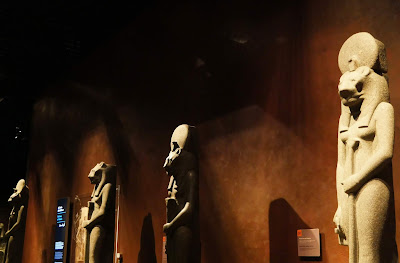The Castello
Today's plan was to get a cab to the Borgo Medievale, which is at one end of the Parco del Valentino, and walk back to our hotel. The Borgo Medievale was built for the Italian General Exhibition of 1884 and features
reproductions of 15th century buildings and furnishings in the style of Piedmont and the Aosta Valley. We started by admiring the dramatic Castello and then walked round to the right to find the entrance on the banks of the River Po. This rather lovely panel marked the spot.
Inside (which is free unless you want a guided tour) there is effectively a medieval street. You first notice a church with a facade partially in terracotta and covered in frescoes.
Further along a house with an overhanging first floor supported on massive columns
It is very quiet this morning and we pretty much have the place to ourselves. Looking back it becomes clear that thee are delightful frescoes on the end of the building opposite.
The final gateway has more lovely frescoes.
Leaving the Borgo we continue along the banks of the Po - the longest river in Italy, rising in the Alps and reaching the Adriatic over 400 miles later. Here is it quite wide and slow moving.
As we approach the Vittorio Emanuele bridge, the Church of Santa Maria al Monte dei Cappuccini, a late 16th century Capuchin monastery, dominates a hill on the opposite side of the river.
As we reached the north end of the Park we were surprised to this splendid arch. It seems to be called the Monumental Arch the Weapon of Artillery (which feels like a poor translation). It dates from 1930 - and features lots pf weapons, including cannon.
We headed along via P and via san Massimo (leading into via Montebello) to reach one of Turin's most famous buildings: the strangely named Mole Antonelliana. Thsi was our first view from the rear.
It is named for its architect, Alessandro Antonelli - a mole in Italian is a monumental building. It certainly justifies its name. It was conceived as a synagogue at a time when Turin was briefly the capital of Italy. The architects desire for an enormous building eventually led to the Jewish community abandoning the project and the city took it over as a museum. It is now the National Museum of the Cinema. It is 167.5 m (550 ft) high and is the tallest un-reinforced brick building in the world (it was built without a steel girder skeleton). Apparently you see the Alps from the viewing point at the top.
It was founded in 1824, but grew sharply between 1903 and 1937, when the archaeological excavations conducted in Egypt by Ernesto Schiaparelli and then by Giulio Farina brought some 30,000 artifacts to Turin. The route through the museum is chronological, starting with artifacts from the 4th century BC like this wonderful seated figure.
The routing is slightly confusing in places but you end up in the incredible Gallery of Kings.
One of my favourites was this statue of Pharaoh Horemheb and the god Amun (Amun is on the left - he is bigger because he is more more important)
Conditions: hot and sunny.
Distance: about 3 miles.
Rating: four stars. Interesting and varied.














No comments:
Post a Comment